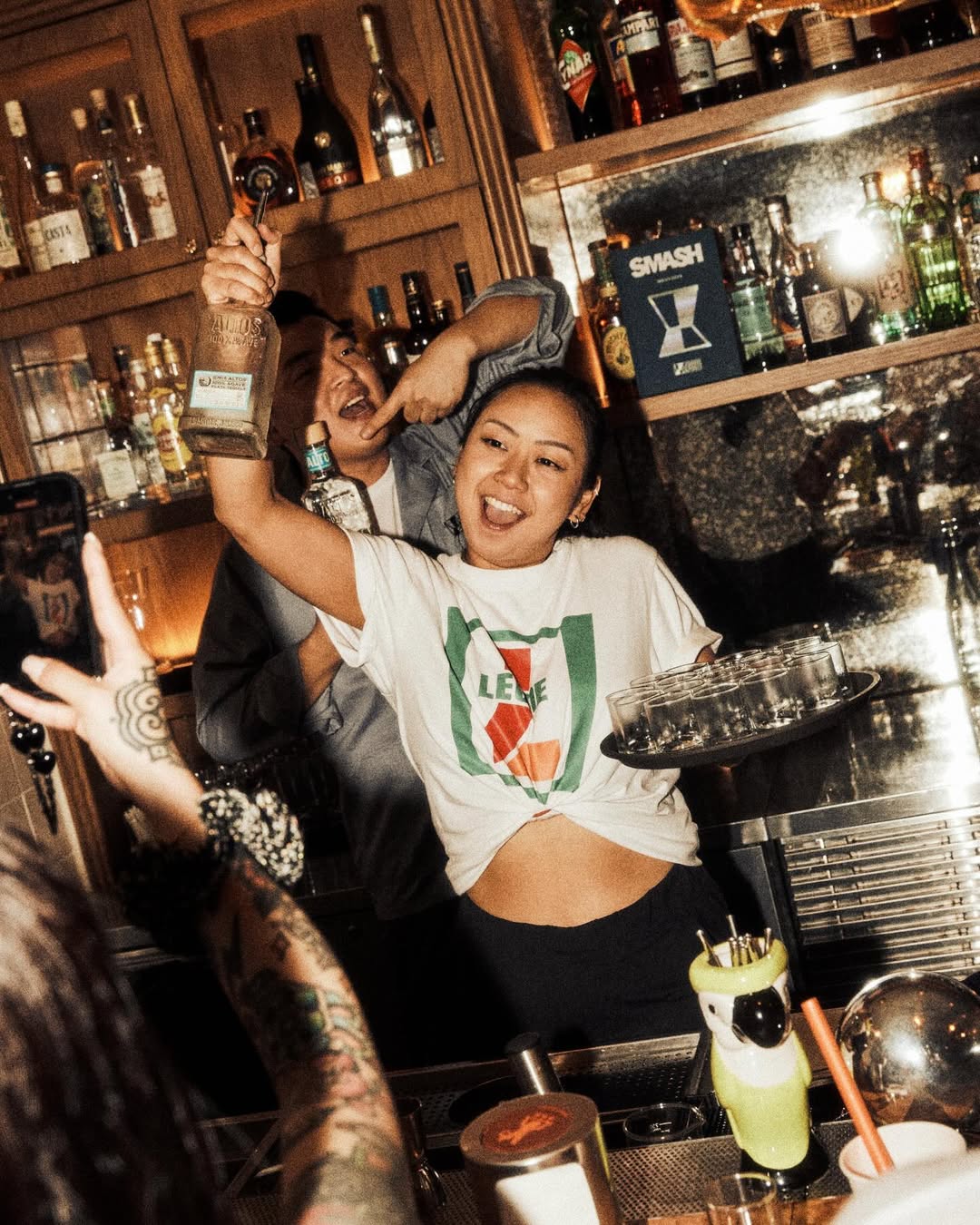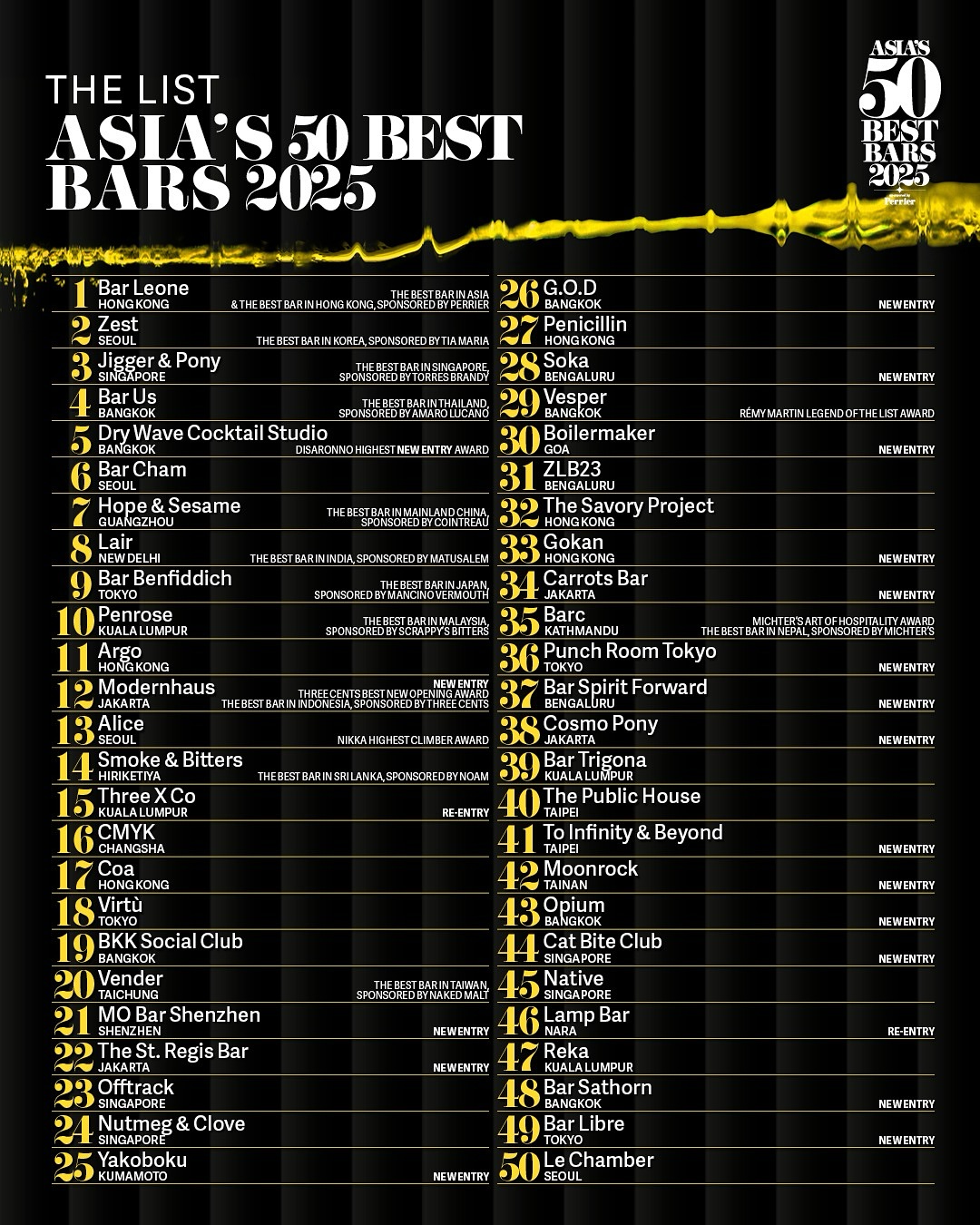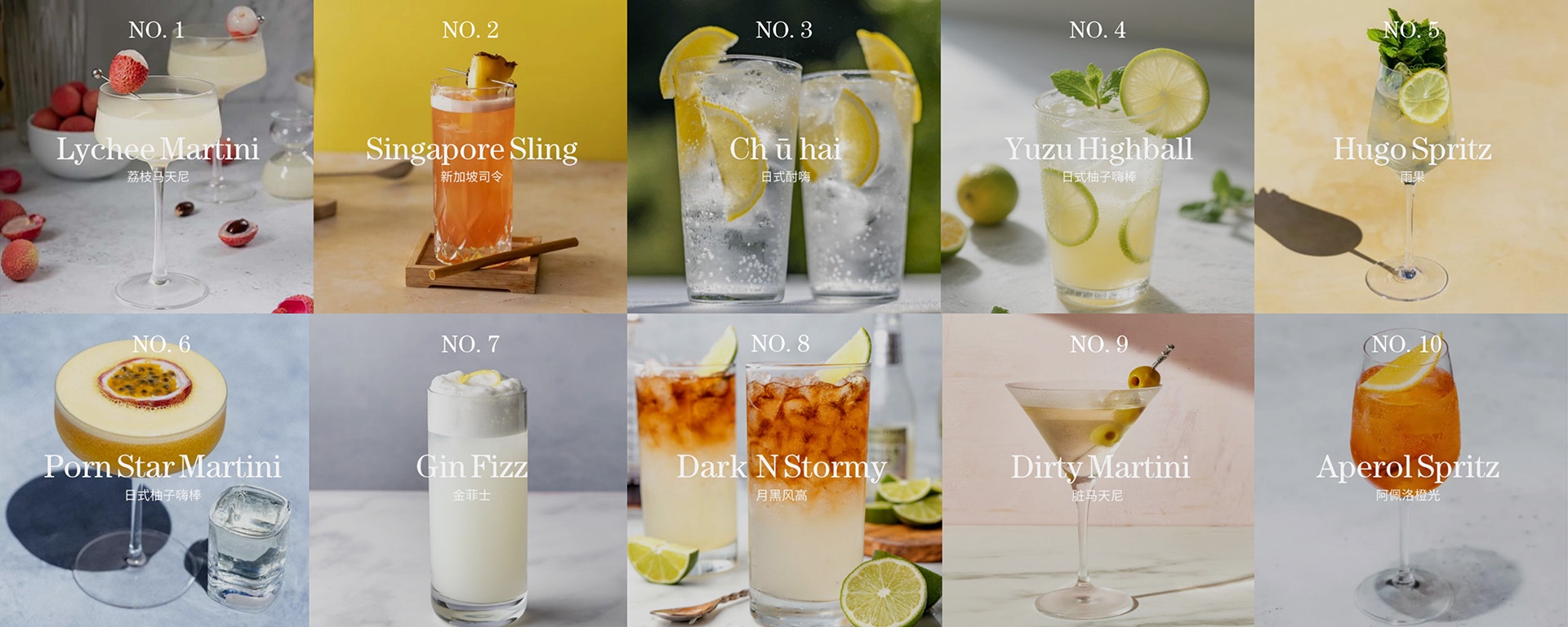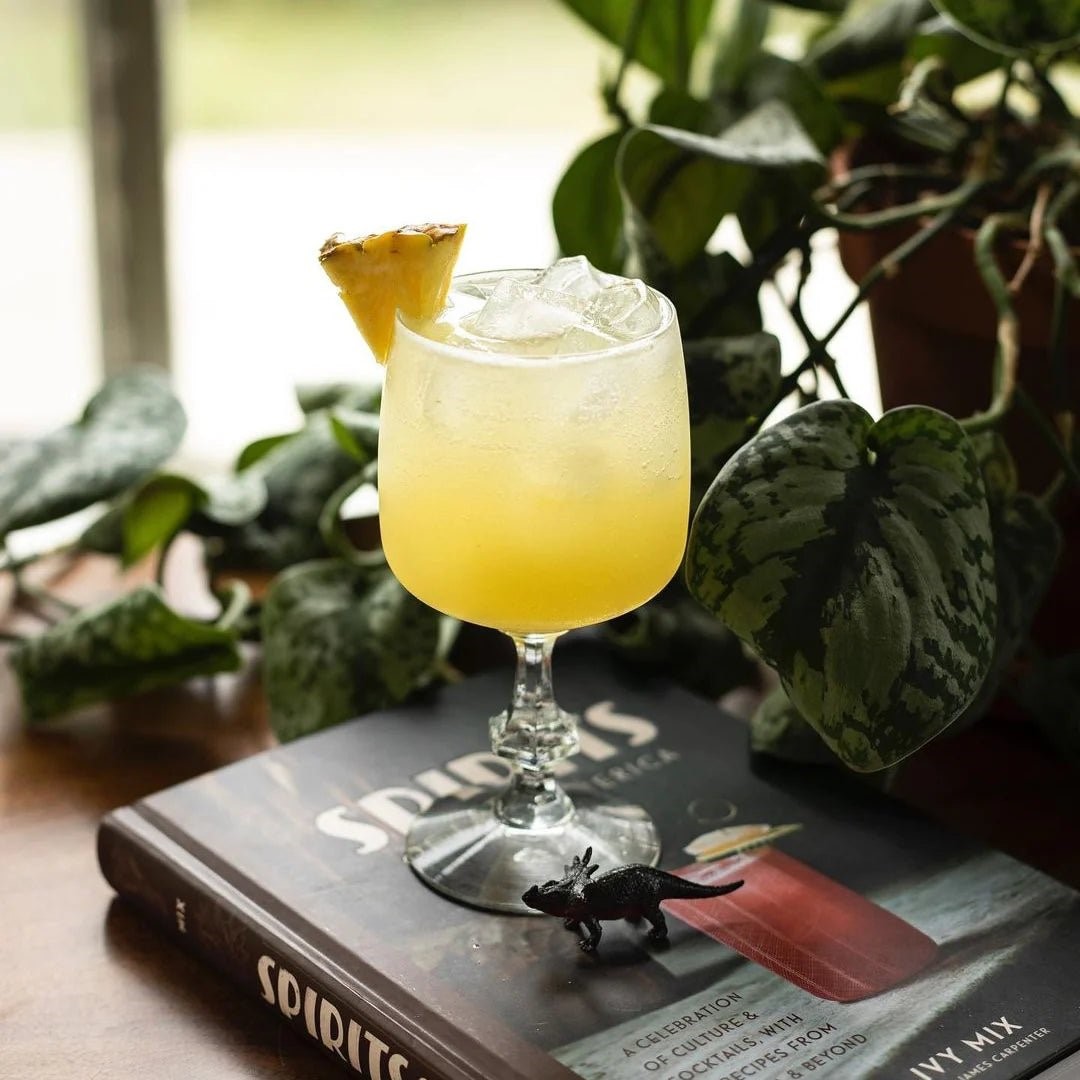2020 官网升级中!现在您访问官网的浏览器设备分辨率宽度低于1280px请使用高分辨率宽度访问。
The global beverage industry is at a pivotal moment, navigating a landscape rich with both challenges and opportunities. With the wine market experiencing a significant slowdown, could cocktails emerge as the spirits sector’s next growth engine? And what key trends are driving this transformation?

(INS @ barleonehk)
According to the International Wine and Spirit Research (IWSR), global wine production fell 4.8% in 2024 to 225.8 million hl, while consumption dropped 3.3% to 214.2 million hl — both reaching their lowest levels in six decades. In China, wine consumption fell sharply by 19.3% to 5.5 million hl, coupled with a 17% drop in domestic wine production, pushing the country from 5th to 10th in global wine-drinking rankings since 2019. The fall in China’s demand, Data from the China Commercial Industry Research Institute shows national wine production between January and May 2025 dropped 26.5% year-on-year to 36,000 kiloliters. Clearly, the industry faces severe challenges.
By contrast, the spirits market is showing resilience. Fueled by the experience economy and upgraded consumption, cocktails have thrived against the trend. IWSR notes that in Asia-Pacific, categories like tequila, gin, and aperitifs are gaining ground, with affordable white spirits seeing strong growth—closely tied to the rise of cocktail culture.
CGA by NIQ’s Global Cocktail Report finds cocktails are now the world’s fourth most popular beverage category, behind only beer, soft drinks, and wine. Globally, 27% of consumers drink cocktails outside the home. In the U.S., cocktails make up 34% of spirits sales in bars, generating an average of $14,000 per venue over 12 weeks. In Asia-Pacific, 32% of consumers order low- or no-alcohol cocktails at bars and restaurants.
China has seen a surge of leading cocktail bar brands: Shanghai’s Pony Up entered Asia’s Top 50 at #97 just a year after opening; Guangzhou’s Temple Street Ice House ranked #7 for its creative use of local flavors; and Penicillin’s Shanghai outpost has become one of the city’s hottest venues with long lines.
The release of the 2025 World’s 50 Best Bars and Asia’s 50 Best Bars lists has fueled widespread discussion. Once mere rankings, these lists now serve as “consumer guides,” sparking viral trends like “City Drunk” and “urban tipsy maps,” engaging a new generation of drinkers.
From statistics to cultural shifts, all signs point to cocktails driving a global wave of change. Let’s explore how this vibrant movement is reshaping the industry.
01 Shifting Consumer Dynamics:
Evolving Demographics: Gen Z And Women
The rapid entry of Gen Z and women into the alcohol market has fueled explosive cocktail growth. CGA data shows 58% of people aged 21–30 order cocktails at bars, compared to just 32% for traditional spirits. Among women, 30% say cocktails are their top choice, versus only 14% of men.
Cocktails attract young consumers and women through colorful presentation, layered flavors, Instagram-friendly appeal, and “self-pleasing” moments. These qualities fit perfectly with modern social habits. GlobalData reports Gen Z spends significantly more at bars than other groups, seeking both innovation and quality.
From timeless classics to signature bar creations, cocktails let young consumers “customize” their drinking identity. As Bacardi CEO Mahesh Madhavan put it: “Consumers are redefining how they connect—cocktails have become a bridge to new experiences, fresh perspectives, and deeper relationships.”
02 The Cocktail Revolution:
Key Consumption Trends in the Industry
As cocktail demand grows, Asian bars—known for distinctive flavors and rising quality—are moving from following Western trends to shaping the global cocktail conversation.
The Spirits Business’ global bar report highlights that regional flavors are drawing drinkers worldwide to Asia, keeping the continent’s cocktail industry vibrant and growing.
The 2025 Asia’s 50 Best Bars list underscores this: 14 new entries broke through, signaling a move beyond Singapore-Japan dominance (once 70% of the Top 10) to include China, South Korea, and Thailand. China stood out with 3 bars in the global Top 50 and 13 in Asia’s 50 Best.

What new tastes fill the glasses of the younger generation?
VML Intelligence reports 72% of people want to engage as many senses as possible when trying something new. CGA data shows 62% repurchase drinks that feature local elements. Drinking is no longer just about refreshment or mild intoxication—it’s about local experience and social recognition.
This is evident in the cocktail trend rankings across the Asia-Pacific region:

* Source: Synthesis of international bar awards & Forbes market-specific analysis of Japan, Singapore, and key APAC markets
Lychee Martinis are surging, Yuzu Highballs dominate Tokyo youth culture, and the Singapore Sling revival has reignited regional pride. Industry leaders note more Asian-inspired cocktails appearing on top bar menus worldwide.
In Guangzhou, Hope & Sesame infuses cocktails with Cantonese elements like dried tangerine peel and lychee. In Bangkok, Bar Us cofounder Taln’ Rojanavanich incorporates Thai fermentation traditions into her creations.
Consumers today crave not just a drink, but a cultural dialogue.
Beyond flavor, cocktails are increasingly tied to premium entertainment. Bacardi’s 2025 Cocktail Trends Report notes the power of fan culture. A Nielsen study echoes this, with 72% of millennials preferring experiences over products.
At concerts and festivals, elevated hospitality and bespoke cocktail experiences are in high demand. At BST Hyde Park, Diageo’s ready-to-drink cocktails proved hugely successful. In 2025, Diageo UK announced a multi-year deal with Live Nation UK, becoming the official spirits partner for 16 major festivals.
Fans now expect cocktails to be part of entertainment culture, blending drinks with music, sports, and live events.
“Bartenders aren’t just performers—they’re the first connection between brands and consumers.”
— Georgie Collins, The Spirits Business
Female mixologists are reshaping cocktail culture with professionalism and creativity. Meet the women behind this year’s top bars:

( INS @ monicasuh )
Norwegian bartender Monica Berg co-founded London’s Tayēr + Elementary. In 2019, she became the first woman to win the Altos Bartenders’ Bartender award at the World’s 50 Best Bars — an honor that both recognized her technical mastery and set a new benchmark for women in the industry.

( INS @tayer_elementary )
Berg truly shines in reimagining classic cocktails through hyper-seasonal ingredients – think lingonberries foraged from Nordic forests to soften juniper’s bite, or moss-infused spirits that mirror her homeland’s glacial crispness, transporting drinkers through an immersive Scandinavian sensescape. Her innovative, sustainability-driven approach (pioneering local sourcing and wild harvesting) has cemented her reputation as ‘her generation’s most progressive mixologist.

( INS @ delossantosines,)
As one of Argentina’s most celebrated bartenders and the first Argentine woman spotlighted by the World’s Best Spirits Selection, Inés de los Santos leads CochinChina’s award‑winning team. Her vision has turned the venue into a culinary landmark, drawing bartenders and tourists worldwide. “CochinChina is more than a bar,” Santos told WBSS. “It’s proof that regardless of origin, female bartenders can define industry standards through their creations.”

( INS @cochinchina.bar )

( INS @ kankantai )
Hong Kong‑born Shelley Tai joined Nutmeg & Clove in 2019 as Operations Director. Under her leadership, the bar climbed from #36 on Asia’s list in 2022 to #6 in 2024, and secured #28 globally in 2025. Tai leverages Instagram and TikTok to share mixology demos and behind‑the‑scenes stories, growing the bar’s following and helping embed cocktail culture into everyday life.
( INS @ kankantai)

( INS @ taln )
From interior designer to co‑founder and bartender at Bar Us, Taln merges experimental culinary techniques with mixology. Since launching the intimate Bangkok bar in 2020, her refined sense of space and flavor has turned Bar Us into a “mixology lab.” Taln directs both design and operations with a female perspective, inspiring other women in the field through her journey. 
( INS @ bar.us.bkk )

( INS @ lolasaysgo )
As Senior Bartender at Hope & Sesame (Guangzhou, ranked 8th in Asia), Lola Lau exemplifies female-driven innovation through “narrative creation.”
In 2023, her winning entry at the Cointreau Margarita Challenge global finals drew widespread attention: beyond refining the drink’s color and garnish details, she interwove Eastern flavors (such as dried tangerine peel and lychee) and personal narratives into the recipe, endowing the cocktail with vivid storytelling depth.
This encapsulates her philosophy: “technique as bone, emotion as soul.”

( INS @ lolasaysgo )
Traditionally male-dominated, the drinks industry is embracing femininity as it seeks youth appeal.

(The Bar Us team boasts a significant presence of female members., INS @ bar.us.bkk)
Female representation in bars is rising, with mentorship programs and competitions like Speed Rack propelling women into leadership. In major Asian cities, women now make up over 40% of bartenders in top venues.
Research shows women’s presence in bars is steadily climbing. Female representation in bars is rising, with mentorship programs and competitions like Speed Rack propelling women into leadership. In major Asian cities, women now make up over 40% of bartenders in top venues.
And Southeast Asian markets like Bangkok and Singapore have seen a 30% year‑on‑year rise in female‑led establishments.
The rise of female bartenders is ultimately a targeted response to evolving tastes. Their innovative aesthetics and communicative power are increasingly evident in practice.
In the age of social sharing, this narrative advantage shines through. Studies show 46% of young consumers prioritize “Instagrammable” drinks. With floral garnishes and artistic presentation, female mixologists create visuals that resonate with the social media generation.

(Brooklyn Burro, Images are from web)
In New York, Ivy Mix’s Brooklyn Burro softened rum with ginger syrup and pineapple juice, becoming a bestseller while inspiring global bartenders to explore cross-cultural flavors.
03 OUTOOK:
The Future of Beverage Industry
Spirits’ counter-trend growth, unlocks endless possibilities
It’s clear that spirits and cocktails are creating “mutual empowerment” in the market: cocktails introduce spirits to wider audiences, while spirits elevate cocktail culture.
For example, TikTok’s #HugoSpritz has amassed 290 million views, and St-Germain elderflower liqueur—popularized by the drink—nearly tripled its global market share, illustrating how “single-product trends” drive “industry growth.” Conversely, someone who’s never tried bourbon might fall for its vanilla notes through a “Bourbon Sour,” eventually converting from a “cocktail consumer” to a “neat drink enthusiast.”
Drawing lessons from spirits, the wine industry is also exploring new opportunities: wine-based concoctions like Lychee Sprite (lychee + Sprite) and White Wine Sangria are capturing young consumers’ attention. Thus, letting go of rigid “traditional tasting” mindsets, leveraging female practitioners’ strengths, and integrating new “narratives” and “experiences” could become a new growth engine for wine—and the broader alcohol industry.
WINWSA looks forward to women leading this shift. When feminine aesthetics and emotional insight meet innovation, they create more than cocktails—they create cultural co-creation, opening infinite possibilities for the beverage world.
· E N D ·